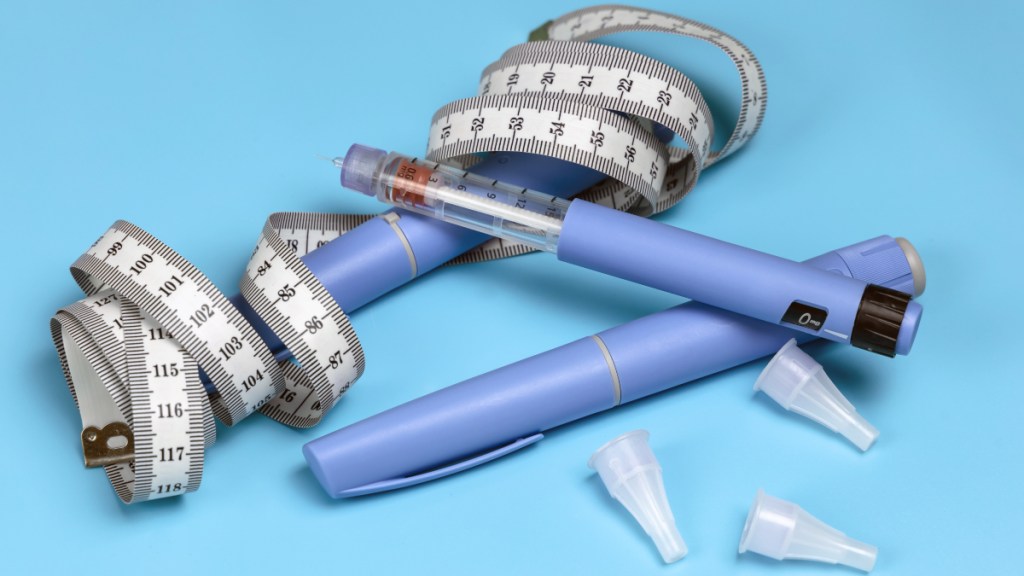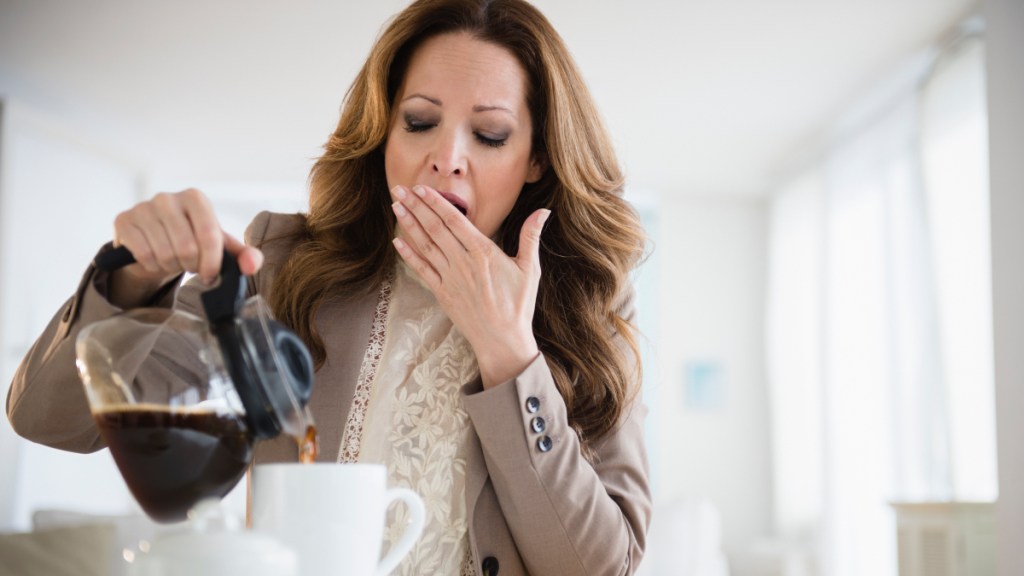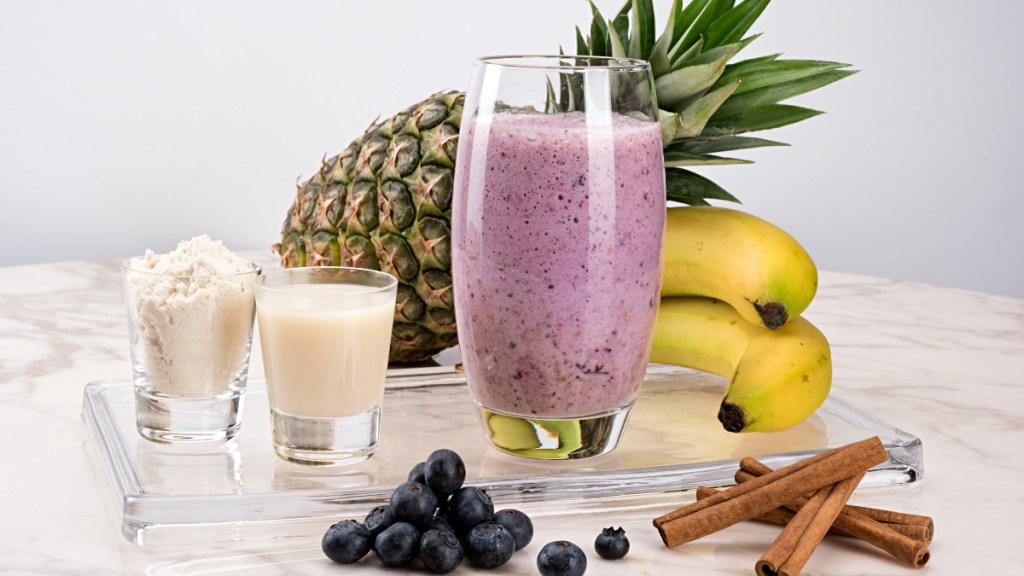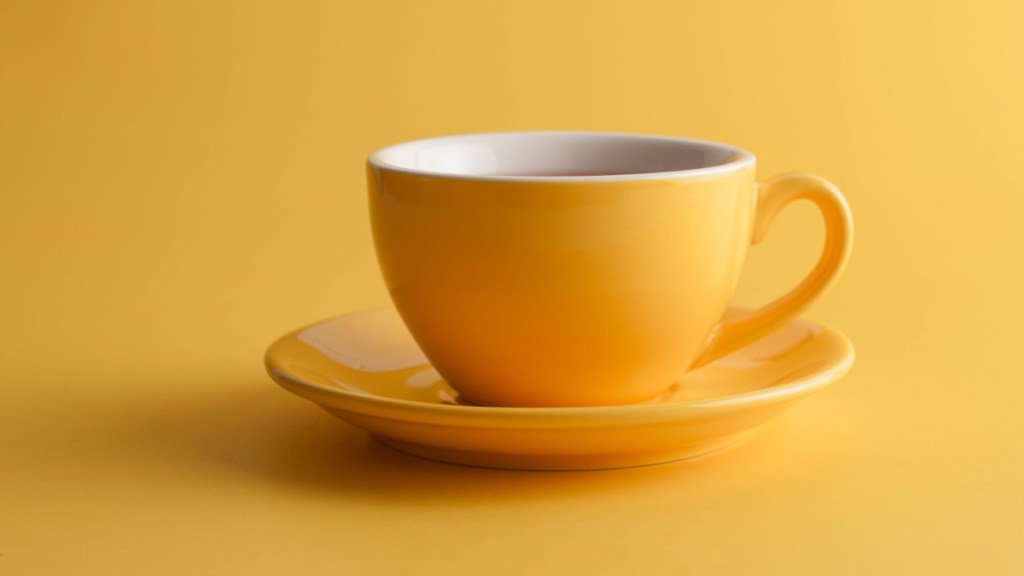Does Ozempic Make You Tired? Docs Share the Surprising Reason + Easy Energy Boosters
See the timing tweak that fights fatigue and crushes cravings

Diabetes and obesity are two of the most common chronic health issues in America. And Ozempic has been touted as a new “miracle drug” that can help treat both. But if you’ve started taking the injectable and find yourself feeling groggy and drained, you’ve likely wondered does Ozempic make you tired? Turns out, it can. So we checked in with top doctors to find out more about this little-discussed side effect. Plus we’ve got their top tips for keeping your energy up — whether you’re on the medication or not.
How Ozempic and other GLP-1s work
Though many folks are turning to Ozempic to shed unwanted pounds these days, the medication isn’t actually FDA-approved for weight loss. Ozempic is a diabetes drug that lowers blood sugar levels in adults.
“It enhances the release and action of insulin throughout the body,” explains Sue Decotiis, MD, a triple board-certified weight loss doctor practicing in New York, NY. “Ozempic and drugs like it shut down appetite, so a patient feels very full after eating much less food.” It also slows digestion, so you feel fuller longer.
“Ozempic belongs to a class of medications called glucagon-like peptide-1, or GLP-1s,” adds Simin Lee, MD, a cardiologist at the Harvard-affiliated Brigham and Women’s Hospital. The active ingredient in Ozempic is semaglutide. It mimics the body’s natural GLP-1 hormone, which acts on the brain to quiet your appetite. Cravings diminish, and you ultimately eat smaller meals and fewer snacks. Semaglutide is approved for weight loss under the brand name Wegovy. (Struggling to shed pounds at first? See why you may not be losing weight on semaglutide.)

The main difference between Ozempic and Wegovy is dosage. Wegovy has a higher maximum dosage with a maintenance dosage of 2.4 mg once weekly, compared to Ozempic’s maintenance dosage of 1 mg once weekly. Other GLP-1 medicines include Saxenda (liraglutide), Trulicity (dulaglutide) and Mounjaro (tirzepatide).
Does Ozempic make you tired?
Yes, GLP-1s like Ozempic can make you feel tired as a side effect. In fact, the FDA label for semaglutide reports that 11% of trial participants experienced fatigue. While this side effect is common, the good news it that both Dr. Lee and Dr. Decotiis say it’s usually temporary.
“Fatigue can be an issue, especially in the first several months of taking the drug,” Dr. Decotiis says. “Your body is working hard to burn fat. If someone isn’t eating enough, that will make it worse. In my practice, we monitor patients’ food intake very carefully so they get enough nutrition.”
The mechanisms that can make you feel tired while taking Ozempic aren’t yet well understood. Experts think it’s likely related to the sudden drops in blood sugar levels, changes in food intake and metabolic adjustments that happen with GLP-1s. And surprisingly, dehydration is often at play, too.

How to up your energy if Ozempic makes you tired
If you’re feeling drained while taking Ozempic or another GLP-1, there are easy ways to up your energy. Here are Dr. Lee’s and Dr. Decotiis’s best tips for fighting fatigue. (Hint: Many of these tricks can also keep your stamina up even you’re on not Ozempic!)
1. Drink more H2O
Dr. Lee attributes a lot of the tiredness from GLP-1s meds to mild dehydration. According to a randomized controlled trial in Nutrients, dehydration made participants markedly more fatigued.
“GLP-1s suppress the urge to drink as well as eat,” Dr. Lee explains. When you’re on one, you may skimp on water. An easy way to up your H2O intake and dodge an afternoon slump? Set reminder alarms on your phone to drink, and track of the total amount of water you consume throughout the day. Free apps like Plant Nanny (for Apple and Android) make tracking your water intake easy and fun.
Just how much is enough? “Because water is also contained in many fruits and vegetables, it’s hard to prescribe a fixed volume of water,” Dr. Lee admits. “My rule of thumb for my patients it that they are adequately hydrated if their urine is clear.”
That said, The National Academy of Medicine suggests about 9 eight-ounce glasses a day for women. And Dr. Decotiis thinks even more water is needed when you’re taking a GLP-1. “Perhaps twice as much is necessary for these drugs to work to burn fat and preserve muscle,” she explains. (See the ultra-easy tips to clean your reusable water bottle.)
2. Slowly sip a protein shake
You know that Ozempic and other GLP-1 drugs curb your appetite. And while that may be good for weight loss, it can spell trouble for your energy level. Since you’ll be eating less, you need to make sure that what you do eat is packed with the nutrition you need to feel good.
“For a lot of patients in my own practice, protein-rich foods tend to be helpful,” Dr. Lee says. “It gives people a sense of vigor. Protein shakes can be sipped slowly, which can be easier than eating a full meal when your appetite isn’t there.”

Simply add a scoop of protein power or protein-packed Greek yogurt to your favorite berry smoothie recipe and sip through the morning to get the benefits. (Not a fan of protein shakes? Learn how to make whipped cottage cheese for a tasty, protein-packed snack.)
3. Strategize dose timing
Most GLP-1s are injections you take once a week. The drug reaches peak concentration in your bloodstream about 24 to 72 hours after the injection, says Dr. Lee. Taking your medicine at a time that works for you goes a long way to limiting the problems fatigue can cause.
“For people who work, maybe the right time for their injection is on a Thursday or Friday so they have the weekend to recover,” says Dr. Lee. This has the added bonus of helping people navigate the weekend. When temptations are most high at those Saturday and Sunday social events, the effects of the drug will also be strongest.
4. Stroll around the block
The last thing you want to do when Ozempic makes you feel tired is work out. And while it may sound counterintuitive, moving your body is one of the best ways to beat fatigue.
“Exercise doesn’t mean doing a marathon or something strenuous,” Dr. Lee reassures. “Try a brisk walk at a pace where you can still hold a conversation. That level of exercise can really invigorate you, especially if you go outside and get fresh air.” Even a short 10 to 15 minute stroll around the block can make a difference in how energized you feel. (Discover the benefits of walking barefoot.)

Dr. Decotiis agrees, cautioning against any exercise that’s overly strenuous. Why? It can make you feel more worn out. “Check your pulse rate,” she says. “It should be in the fat-burning zone, not the cardio zone.” That means 60 to 70% of your maximum heart rate. If you’re not sure what your max heart rate is, simply take 220 and subtract your age. For example, a 50-year-old woman has a max heart rate of 170 bpm.
5. Sleep in
Though sleep is an obvious fix when you feel tired, experts say people experiencing fatigue from Ozempic and other GLP-1s often overlook the idea of resting more. “So few people are getting enough sleep,” says Dr. Lee. “Sleeping more can help you get through the period of adjustment to a new medication.”
Logging extra Zzzs can mean going to bed earlier and sleeping later when you can. But don’t forget about naps, too! Even a short afternoon snooze can be an effective to way to regroup your energy in the middle of the day, according to Dr. Lee.
6. Grab a cup of joe
Keep in mind that the fatigue you experience as a side effect from Ozempic, Wegovy or any GLP-1 is probably temporary. If an early afternoon cup of coffee helps you power through the afternoon, go ahead and indulge. “I don’t object to caffeine unless someone has a high-risk heart condition like arrhythmia,” says Dr. Lee. (Learn how the cholorogenic acid in coffee helps steady your blood sugar, too.)

Does Ozempic make you tired? Other side effects
Feeling tired isn’t the only side effect of GLP-1s like Ozempic. Other common unpleasant side effects include nausea and diarrhea. These issues are part of the reason that between 40 and 70% of people quit taking these drugs after a period of time. Cost is another factor. GLP1-s can be expensive — up to $16,200 a year — and insurance doesn’t always cover them. (Learn how Ozempic can cause hair loss, too.)
When people do stop taking Ozempic or other GLP-1s for weight loss, most gain at least two-thirds of the weight they lost back according to a study in Diabetes Obesity Metabolism. That’s why Dr. Decotiis encourages people to do whatever they can to lose weight on their own before turning to medication. While the drugs can be helpful for those with diabetes, “you don’t want to just go on these drugs if you have a lifestyle problem,” says Dr. Decotiis.
But if you and your healthcare provider decide that GLP-1s are an appropriate treatment for you, you’ll be prepared to fight the fatigue that may come along for the ride.
For more on Ozempic and its potential side effects:
Ozempic Can Be a Sneaky Cause of Hair Loss — Dermatologists Reveal How to Restore Volume
Little-Known Ozempic Side Effect Is Worse for Women over 50: MDs Explain & Advise
Your Guide to Ozempic and the New Weight-Loss Drugs: Top Experts + Real Women Tell All
This content is not a substitute for professional medical advice or diagnosis. Always consult your physician before pursuing any treatment plan.

















